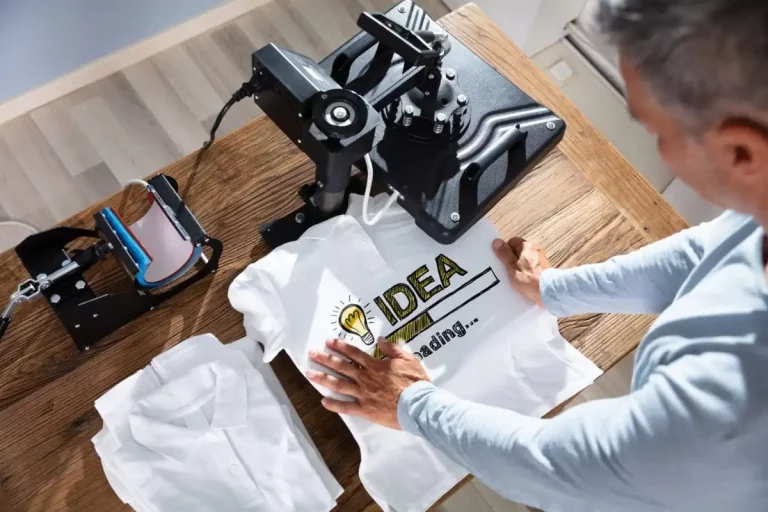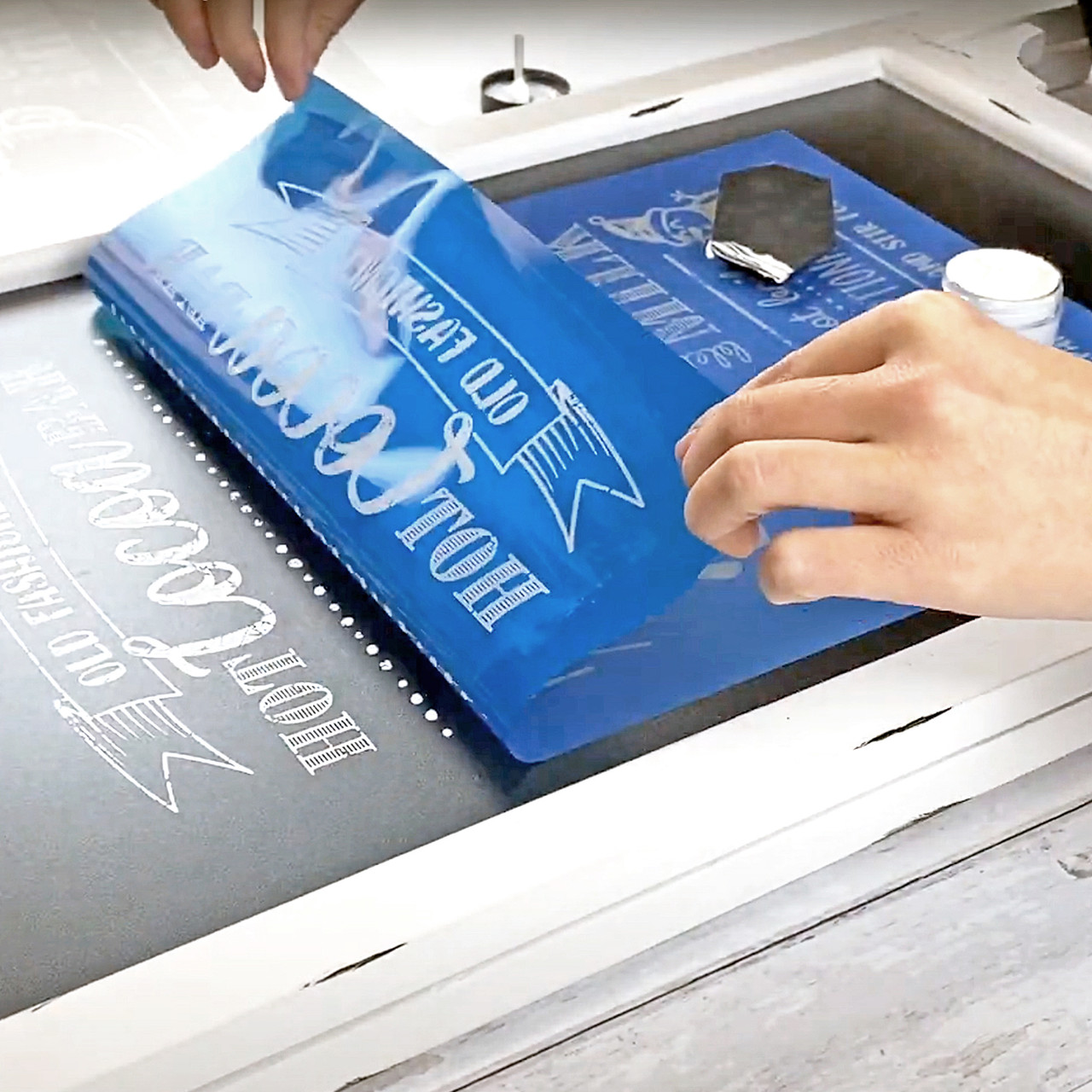Vintage Style Silk Screen Printing for Retro Fashion
Vintage Style Silk Screen Printing for Retro Fashion
Blog Article
Screen Printing Uncovered: Every Little Thing You Required to Understand About T-Shirt and Garment Printing Methods
If you have actually ever asked yourself how those dynamic layouts finish up on your preferred tees, you're in the ideal area. Screen printing is an interesting approach that integrates art with strategy, supplying endless possibilities for creativity. Comprehending the fundamentals, from devices to ink choices, can greatly affect your results. Ready to check out the crucial elements that make screen publishing an art kind? Allow's discover the information that can boost your tasks.
The Essentials of Display Printing: Exactly How It Works
When you dive right into screen printing, you'll uncover it's both an art and a scientific research. At its core, display printing includes creating a pattern, or screen, that permits ink to go through just in specific areas (screen printing kit). You start by choosing your style and preparing your display with a light-sensitive solution. When you expose this solution to light, it sets, leaving your design as an adverse area.
Setting the display over the fabric, then utilize a squeegee to press ink with the display onto the garment. Each action is important, and grasping them will elevate your display printing skills, changing straightforward garments into unique, meaningful pieces.
Sorts Of Display Printing Techniques
Once you understand the essentials of display printing, it's time to check out the different methods that can boost your layouts. One popular technique is traditional screen printing, where ink is pushed through a stenciled screen.
One more alternative is plastisol printing, understood for its toughness and vibrant colors, making it a favored for several brand names. Experiment with halftone printing to create slope impacts and intricate designs.
Necessary Devices for Screen Printing
To attain sensational lead to screen printing, having the appropriate tools is basic. First, you'll require a strong screen printing framework, which holds the mesh that moves your style onto the garment. Next off, buy premium mops; these are essential for using ink evenly across the screen. You'll additionally call for a good direct exposure system to develop your displays, as well as a washout booth for cleansing them after use. A reputable warmth source, like a conveyor dryer or heat press, is critical for treating your prints to assure durability. Don't fail to remember a correct workspace, furnished with tables and storage space for your products. Safety equipment, such as gloves and masks, will keep you safe from chemicals and inks. With the right tools, you'll be well on your way to generating professional-quality prints.
Picking the Right Inks and Materials
When selecting inks and products for display printing, you need to take right into account the sort of ink that works finest for your project. Think of textile compatibility to ensure your styles look last and great long. Check out environmentally friendly ink options to make your printing process extra lasting.
Sorts Of Screen Inks
Selecting the appropriate screen ink is essential for accomplishing lively, durable prints that fulfill your job's requirements. There are numerous types of screen inks to take a look at. Specialized inks, such as glow-in-the-dark or metal, can add special results to your designs.

Textile Compatibility Considerations
Comprehending material compatibility is crucial for accomplishing top notch display prints, particularly considering that different materials react uniquely to various inks. When choosing inks, think about the fabric kind-- cotton, polyester, or blends. For cotton, water-based inks function well, using gentleness and breathability. Polyester, on the other hand, often calls for plastisol inks for far better bond and lively colors. You may need to utilize a mix of both kinds if you're publishing on blends. Constantly evaluate your inks on sample material to assure they stick properly and maintain color integrity. Furthermore, remember that textile weight and texture can influence the last result, so selecting the appropriate ink and product combo is essential for your job's success.
Eco-Friendly Ink Options
Environment-friendly inks are becoming a prominent selection for screen printers who intend to reduce their ecological impact while preserving top quality. When choosing inks, consider water-based inks, which are much less hazardous and less complicated to tidy up contrasted to conventional solvents. These inks bond well with textiles, supplying vibrant results without poisonous chemicals. You might likewise discover eco-solvent inks that use less unpredictable natural compounds (VOCs), making them a much safer alternative for both your health and the world.
Furthermore, search for inks made from sustainable resources, such as soy or vegetable-based alternatives. By picking the right inks and products, you'll not just develop stunning designs but also add to a more sustainable printing process. Make the button, and your prints will certainly reflect your dedication to the environment!
Preparing Your Design for Screen Printing

File Layout Demands
To ensure your layout looks sharp and vibrant on fabric, you'll require to pay very close attention to file layout demands for screen printing. Beginning with vector data like AI or EPS, as they can be scaled without shedding high quality. If you utilize raster images, opt for high-resolution data, such as TIFF or PNG, ideally at 300 DPI. Prevent utilizing JPEGs, as they can lose clarity when resized. Make sure your style has a clear history to avoid undesirable white edges on your prints. Lastly, maintain shade modes in mind; CMYK is conventional for screen printing, so convert your RGB designs as necessary. By following these standards, you'll set your artwork up for a successful print.
Shade Splitting Up Strategies
Shade splitting up is a necessary step in preparing silk screen printing your design for display printing, and grasping it can considerably enhance your print high quality. You'll require to damage your layout into private shades, as each color needs a separate screen during printing. This precision not only assures precise shade representation yet additionally simplifies the printing procedure.
Resolution and Dimension
Attaining the most effective outcomes in screen printing starts with guaranteeing your design has the right resolution and size. Ideally, your art work should be at least 300 DPI (dots per inch) for sharp, clear prints. Your last product may look pixelated and unprofessional. if you utilize reduced resolution.
When it comes to dimension, take into consideration the dimensions of your print area. Style your artwork to match the final print dimension, preferably developing it in the actual dimensions you'll be printing. By doing this, you'll stay clear of any unexpected scaling issues.
Always check your layout in both vector and raster styles. Vector graphics can be scaled without losing quality, making them perfect for display printing. Preparing correctly will ensure your design looks outstanding on every garment!
Step-by-Step Display Printing Refine
Screen printing is a dynamic process that allows you to create lively designs on numerous surface areas. To get begun, you'll need a display, emulsion, and your picked ink. Initially, prepare your display by cleaning it extensively. Next off, apply the emulsion evenly and let it completely dry in a dark area. As soon as dry, expose your screen to light with your layout positioned on it, which will set the emulsion where the light hits, developing a stencil - screen printing kit.
Put ink onto the screen and utilize a squeegee to press the ink via the stencil onto the fabric. Lift the display thoroughly and allow the print dry. You have actually successfully display printed your design.
Tips for Successful Screen Printing Projects
While you're diving into your screen printing projects, remember that preparation is key to success. Start by gathering all your products-- inks, displays, squeegees, and garments. A tidy office assists avoid unwanted errors, so clean up prior to you start.
Next, validate your art work is high-resolution and properly sized for your garment. Evaluate your display for appropriate direct exposure and tidy it thoroughly to stay clear of smudges. When blending your inks, adhere to the producer's standards to achieve the best consistency.
Throughout printing, apply also pressure with your squeegee for constant results. Don't rush; take your time to confirm each print fulfills your learn this here now standards. After printing, let your garments completely dry totally before dealing with or packaging them.
Finally, constantly maintain a sample of your help future referral. By doing this, you can evaluate your progress and enhance your strategies with time. Pleased printing!

Regularly Asked Concerns
The length of time Does It Require To Establish a Screen Printing Job?
Establishing up a screen printing task normally takes about thirty minutes to an hour. You'll prepare the displays, mix inks, and readjust journalism. The time differs based upon intricacy and experience, so remain organized!
Can I Print on Different Material Types Using the Very Same Technique?
Yes, you can print on different material types using the same method, yet you'll require to adjust your inks and setups. Some materials take in ink in different ways, so experimenting assurances the finest results for each and every product.
What Prevail Mistakes to Stay Clear Of in Display Printing?
When display printing, stay clear of typical blunders like utilizing the incorrect ink, overlooking appropriate exposure times, or skipping pre-press checks. Constantly test your setup and preserve clean screens to ensure top quality results each time.
Exactly How Can I Effectively Tidy and Preserve My Screen Printing Equipment?
To effectively tidy and keep your screen printing equipment, you must consistently wash screens with appropriate solvents, examine mops for wear, and ensure all devices are saved dust-free and dry. Uniformity improves and avoids pricey fixings efficiency.
Is Screen Printing Eco Friendly Compared to Other Approaches?
Screen printing can be much more environmentally friendly than various other methods, specifically if you make use of water-based inks and eco-conscious products. By selecting sustainable products and methods, you reduce waste and decrease your impact on the world.
Display Printing Uncovered: Every Little Thing You Need to Know Concerning Tee and Garment Printing Techniques
At its core, display printing involves producing a pattern, or screen, that permits ink to pass via just in certain areas. Setting the display over the material, then utilize a squeegee to push ink through the screen onto the garment. One popular method is typical display printing, where ink is pushed via a stenciled screen.When picking inks and products for next display printing, you require to take into account the type of ink that functions ideal for your task.
Report this page